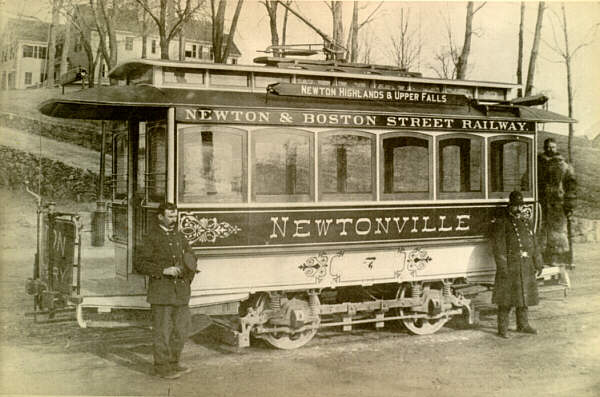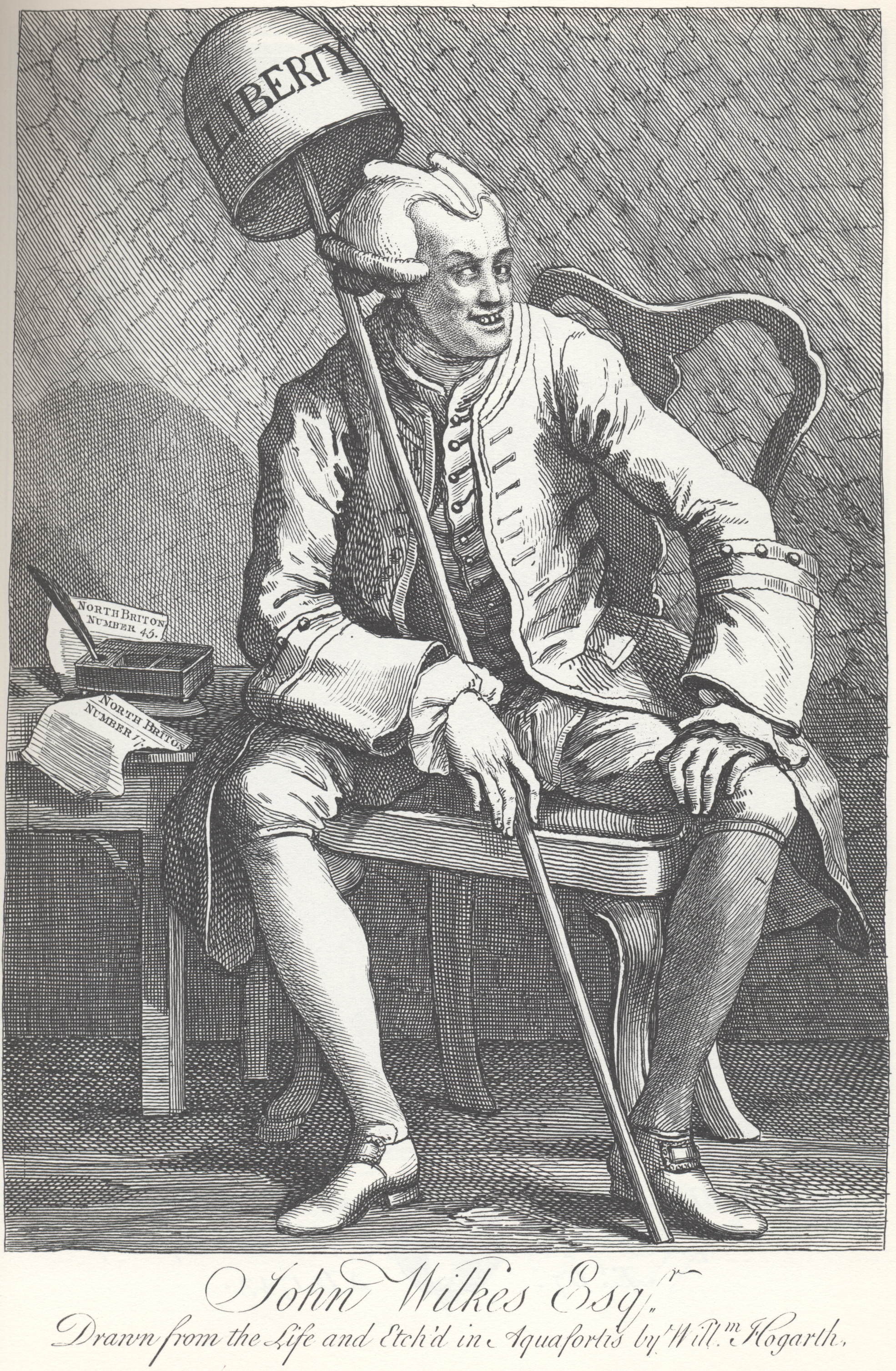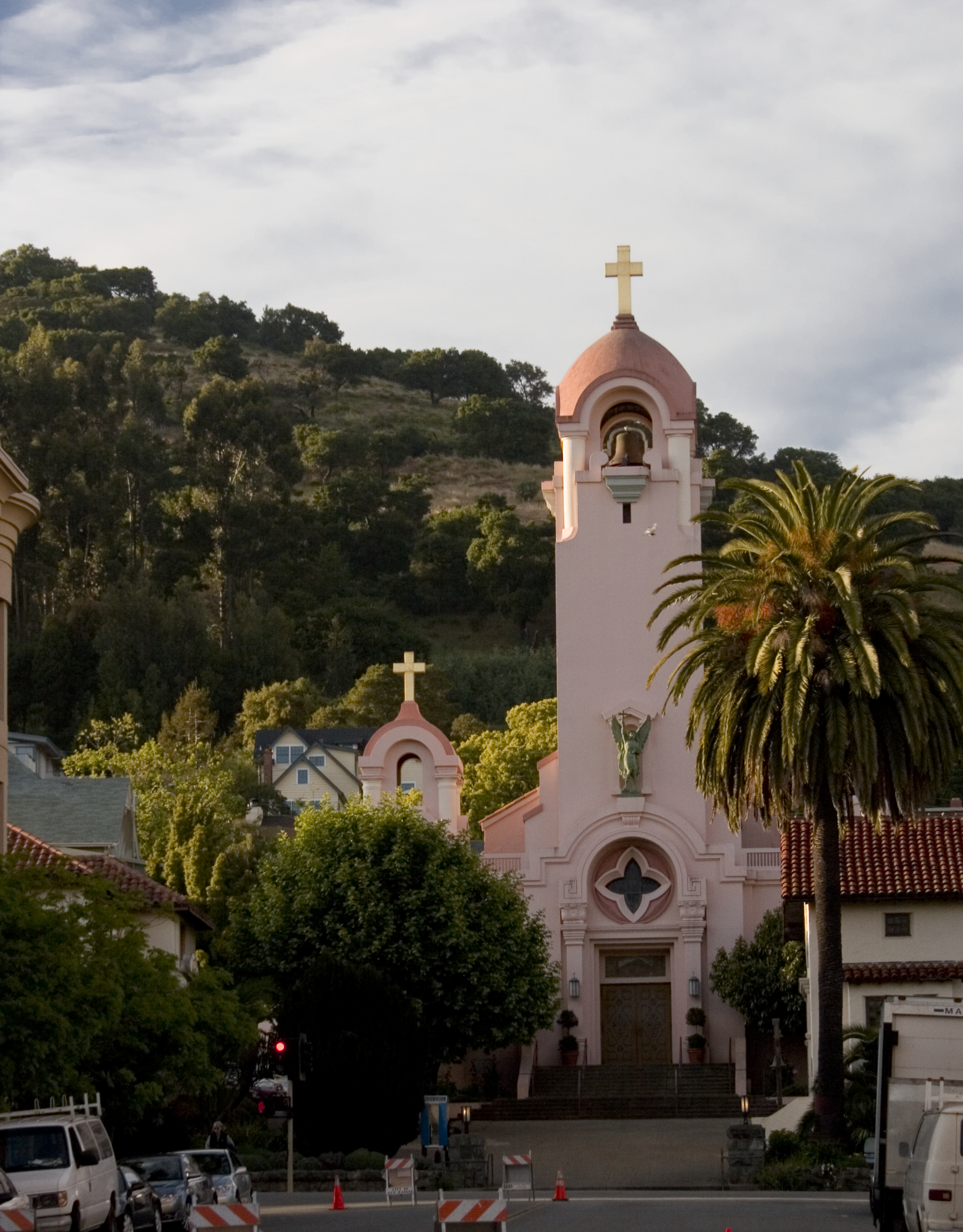|
Transit For Livable Communities
Transit for Livable Communities (TLC) is a regional, nonpartisan transit, biking, walking, and development advocacy group based in St. Paul, Minnesota, USA. It was founded in 1996 by Barb Thoman and John DeWitt. Mission statement Transit for Livable Communities is a non-profit organization that works to improve the quality of life in Minnesota communities through a balanced transportation system that encourages transit, walking, biking, and transit-oriented development. Transit for Livable Communities was founded in 1996 and is funded through private donations and foundation grants. Initiatives Transportation Choices 2020 Since 2004, Transit for Livable Communities has headed a coalition of ten organizations (including itself), known as the "Transit Partners" to lobby the Minnesota State Legislature to pass the Transportation Choices 2020 initiative. According to the Transit for Livable Communities website, the initiative intends to "provide funding to dramatically expand the ... [...More Info...] [...Related Items...] OR: [Wikipedia] [Google] [Baidu] |
Saint Paul, Minnesota
Saint Paul (abbreviated St. Paul) is the capital of the U.S. state of Minnesota and the county seat of Ramsey County. Situated on high bluffs overlooking a bend in the Mississippi River, Saint Paul is a regional business hub and the center of Minnesota's government. The Minnesota State Capitol and the state government offices all sit on a hill close to the city's downtown district. One of the oldest cities in Minnesota, Saint Paul has several historic neighborhoods and landmarks, such as the Summit Avenue Neighborhood, the James J. Hill House, and the Cathedral of Saint Paul. Like the adjacent and larger city of Minneapolis, Saint Paul is known for its cold, snowy winters and humid summers. As of the 2021 census estimates, the city's population was 307,193, making it the 67th-largest city in the United States, the 12th-most populous in the Midwest, and the second-most populous in Minnesota. Most of the city lies east of the Mississippi River near its confluence with the ... [...More Info...] [...Related Items...] OR: [Wikipedia] [Google] [Baidu] |
Mass Transit
Public transport (also known as public transportation, public transit, mass transit, or simply transit) is a system of transport for passengers by group travel systems available for use by the general public unlike private transport, typically managed on a schedule, operated on established routes, and that charge a posted fee for each trip. There is no rigid definition; the ''Encyclopædia Britannica'' specifies that public transportation is within urban areas, and air travel is often not thought of when discussing public transport—dictionaries use wording like "buses, trains, etc." Examples of public transport include city buses, trolleybuses, trams (or light rail) and passenger trains, rapid transit (metro/subway/underground, etc.) and ferries. Public transport between cities is dominated by airlines, coaches, and intercity rail. High-speed rail networks are being developed in many parts of the world. Most public transport systems run along fixed routes with set emba ... [...More Info...] [...Related Items...] OR: [Wikipedia] [Google] [Baidu] |
Biking
Cycling, also, when on a two-wheeled bicycle, called bicycling or biking, is the use of Bicycle, cycles for transport, recreation, Physical exercise, exercise or sport. People engaged in cycling are referred to as "cyclists", "bicyclists", or "bikers". Apart from two-wheeled bicycles, "cycling" also includes the riding of unicycles, tricycles, quadricycles, recumbent bicycle, recumbent and similar human-powered transport, human-powered vehicles (HPVs). Bicycles were introduced in the 19th century and now number approximately one billion worldwide. They are the principal means of transportation in many parts of the world, especially in densely populated European cities. Cycling is widely regarded as an effective and efficient mode of transportation optimal for short to moderate distances. Bicycles provide numerous possible benefits in comparison with motor vehicles, including the sustained physical exercise involved in cycling, easier parking, increased maneuverability, and ... [...More Info...] [...Related Items...] OR: [Wikipedia] [Google] [Baidu] |
Walking
Walking (also known as ambulation) is one of the main gaits of terrestrial locomotion among legged animals. Walking is typically slower than running and other gaits. Walking is defined by an 'inverted pendulum' gait in which the body vaults over the stiff limb or limbs with each step. This applies regardless of the usable number of limbs—even arthropods, with six, eight, or more limbs, walk. Difference from running The word ''walk'' is descended from the Old English ''wealcan'' "to roll". In humans and other bipeds, walking is generally distinguished from running in that only one foot at a time leaves contact with the ground and there is a period of double-support. In contrast, running begins when both feet are off the ground with each step. This distinction has the status of a formal requirement in competitive walking events. For quadrupedal species, there are numerous gaits which may be termed walking or running, and distinctions based upon the presence or absence ... [...More Info...] [...Related Items...] OR: [Wikipedia] [Google] [Baidu] |
Urban Development
Urban means "related to a city". In that sense, the term may refer to: * Urban area, geographical area distinct from rural areas * Urban culture, the culture of towns and cities Urban may also refer to: General * Urban (name), a list of people with the given name or surname * ''Urban'' (newspaper), a Danish free daily newspaper * Urban contemporary music, a radio music format * Urban Outfitters, an American multinational lifestyle retail corporation * Urban Records, a German record label owned by Universal Music Group Place names in the United States * Urban, South Dakota, a ghost town * Urban, Washington, an unincorporated community See also * Pope Urban (other), the name of several popes of the Catholic Church * Urban cluster (other) Urban cluster may refer to: * Urban cluster (UC) in the US census. See List of United States urban areas * Urban cluster (France), a statistical area defined by France's national statistics office * City cluster In Chi ... [...More Info...] [...Related Items...] OR: [Wikipedia] [Google] [Baidu] |
Advocacy Group
Advocacy groups, also known as interest groups, special interest groups, lobbying groups or pressure groups use various forms of advocacy in order to influence public opinion and ultimately policy. They play an important role in the development of political and social systems. Motives for action may be based on political, religious, moral, or commercial positions. Groups use varied methods to try to achieve their aims, including lobbying, media campaigns, awareness raising publicity stunts, polls, research, and policy briefings. Some groups are supported or backed by powerful business or political interests and exert considerable influence on the political process, while others have few or no such resources. Some have developed into important social, political institutions or social movements. Some powerful advocacy groups have been accused of manipulating the democratic system for narrow commercial gain and in some instances have been found guilty of corruption, fra ... [...More Info...] [...Related Items...] OR: [Wikipedia] [Google] [Baidu] |
Transit-oriented Development
In urban planning, transit-oriented development (TOD) is a type of urban development that maximizes the amount of residential, business and leisure space within walking distance of public transport. It promotes a symbiotic relationship between dense, compact urban form and public transport use. In doing so, TOD aims to increase public transport ridership by reducing the use of private cars and by promoting sustainable urban growth. TOD typically includes a central transit stop (such as a train station, or light rail or bus stop) surrounded by a high-density mixed-use area, with lower-density areas spreading out from this center. TOD is also typically designed to be more walkable than other built-up areas, by using smaller block sizes and reducing the land area dedicated to automobiles. The densest areas of TOD are normally located within a radius of to mile (400 to 800 m) around the central transit stop, as this is considered to be an appropriate scale for pedestri ... [...More Info...] [...Related Items...] OR: [Wikipedia] [Google] [Baidu] |
Nonmotorized Transportation Pilot Program
The Nonmotorized Transportation Pilot Program (NTPP) was created in 2005 as part of a six-year United States federal government transportation bill called SAFETEA-LU. According to the law, It provides $21.5 million to each of four communities: Columbia, Missouri; Marin County, California; Minneapolis-Saint Paul, Minnesota; and Sheboygan County, Wisconsin. It will explore how these communities can increase rates of nonmotorized transportation by 2010 through investments in planning, infrastructure, and public education. The communities will also study how these investments will impact traffic congestion, energy use, health, and the environment. The Minneapolis-St. Paul program, launched in 2007 as Bike/Walk Twin Cities, is administered by Transit for Livable Communities, a nonprofit organization. The third round of funding for Bike/Walk Twin Cities projects occurred in 2009 and included $1.75 million for Nice Ride Minnesota Nice Ride Minnesota is a seasonally operated nonprofi ... [...More Info...] [...Related Items...] OR: [Wikipedia] [Google] [Baidu] |
Twin Cities
Twin cities are a special case of two neighboring cities or urban centres that grow into a single conurbation – or narrowly separated urban areas – over time. There are no formal criteria, but twin cities are generally comparable in status and size, though not necessarily equal; a city and a substantially smaller suburb would not typically qualify, even if they were once separate. Tri-cities and quad cities are similar phenomena involving three or four municipalities. A common – but not universal – scenario is two cities that developed concurrently on opposite sides of a river. For example, Minneapolis and Saint Paul in Minnesota – one of the most widely known "Twin Cities" – were founded several miles apart on opposite sides of the Mississippi River, and competed for prominence as they grew. In some cases, twin cities are separated by a state border, such as Albury (New South Wales) and Wodonga ( Victoria) in Australia, on opposite sides of the Murray River. ... [...More Info...] [...Related Items...] OR: [Wikipedia] [Google] [Baidu] |
Minneapolis
Minneapolis () is the largest city in Minnesota, United States, and the county seat of Hennepin County. The city is abundant in water, with list of lakes in Minneapolis, thirteen lakes, wetlands, the Mississippi River, creeks and waterfalls. Minneapolis has its origins in timber and as the grist mill, flour milling capital of the world. It occupies both banks of the Upper Mississippi River, Mississippi River and adjoins Saint Paul, Minnesota, Saint Paul, the state capital of Minnesota. Prior to European settlement, the site of Minneapolis was inhabited by Dakota people. The settlement was founded along Saint Anthony Falls on a section of land north of Fort Snelling, Minnesota, Fort Snelling; its growth is attributed to its proximity to the fort and the falls providing power for industrial activity. , the city has an estimated 425,336 inhabitants. It is the most populous city in the state and the 46th-most-populous city in the United States. Minneapolis, Saint Paul and the su ... [...More Info...] [...Related Items...] OR: [Wikipedia] [Google] [Baidu] |
Sheboygan County, Wisconsin
Sheboygan County is a county in the U.S. state of Wisconsin. It is named after the Sheboygan River. As of the 2020 census, the population was 118,034. Its county seat is Sheboygan. The county was created in 1836 and organized in 1846. At the time, it was located in the Wisconsin Territory. Sheboygan County comprises the Sheboygan, WI Metropolitan Statistical Area. Part of the Holyland region is located in northwestern Sheboygan County. Geography According to the U.S. Census Bureau, the county has a total area of , of which is land and (60%) is water. Major highways * Interstate 43 * Highway 23 (Wisconsin) * Highway 28 (Wisconsin) * Highway 32 (Wisconsin) * Highway 42 (Wisconsin) * Highway 57 (Wisconsin) * Highway 67 (Wisconsin) * Highway 144 (Wisconsin) Railroads *Union Pacific *Wisconsin and Southern Railroad Buses *Shoreline Metro *List of intercity bus stops in Wisconsin Airport Sheboygan County Memorial Airport (KSBM), serves the county and surr ... [...More Info...] [...Related Items...] OR: [Wikipedia] [Google] [Baidu] |
Marin County, California
Marin County is a county located in the northwestern part of the San Francisco Bay Area of the U.S. state of California. As of the 2020 census, the population was 262,231. Its county seat and largest city is San Rafael. Marin County is across the Golden Gate Bridge from San Francisco, and is included in the San Francisco–Oakland–Berkeley, CA Metropolitan Statistical Area. Marin County's natural sites include the Muir Woods redwood forest, the Marin Headlands, Stinson Beach, the Point Reyes National Seashore, and Mount Tamalpais. As of 2019, Marin County had the sixth highest income per capita of all U.S. counties, at $141,735. The county is governed by the Marin County Board of Supervisors. The Marin County Civic Center was designed by Frank Lloyd Wright and draws thousands of visitors a year to guided tours of its arch and atrium design. In 1994, a new county jail facility was embedded into the hillside nearby. The United States' oldest cross country running ... [...More Info...] [...Related Items...] OR: [Wikipedia] [Google] [Baidu] |





